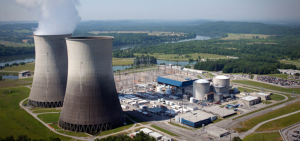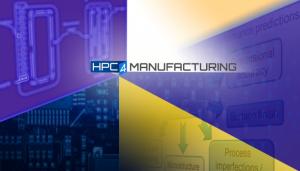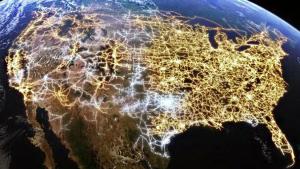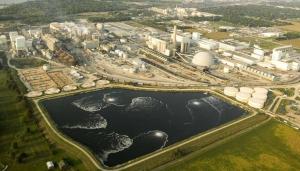LAB REPORT
Science and Technology Making Headlines
May 12, 2017


Scientists are using neutrino detectors to understand what’s going on inside a nuclear reactor in real time. Photo courtesy of Tennessee Valley Authority.
Elusive particle can detect nuclear materials
Neutrinos are vastly abundant in the universe. They are an elusive particle produced by nuclear fusion in stars and through radioactive decay. As nuclear reactors burn through fuel, they produce a steady flow of neutrinos.
Neutrinos interact so rarely with other matter that they can flow past the steel and concrete of a power plant’s containment structures and keep on moving through anything else that gets in their way. They also can be used in detectors that allow scientists to understand what’s going on in a nuclear reactor in real time.
Some scientists are interested in monitoring nuclear power plants to find out if nuclear fuel is being diverted to build nuclear weapons.
“Suppose I declare my reactor produces 100 kilograms of plutonium per year,” says Adam Bernstein of Lawrence Livermore National Laboratory. “Then I operate it in a slightly different way, and at the end of the year I have 120 kilograms.” That 20-kilogram surplus, left unmeasured, could potentially be moved into a weapons program.


A Department of Energy program designed to spur the use of high performance supercomputers to advance U.S. manufacturing is funding 13 new industry projects.
Computing helps manufacture innovation
A Department of Energy program designed to spur the use of high performance supercomputers to advance U.S. manufacturing is funding 13 new industry projects.
The High Performance Computing for Manufacturing (HPC4Mfg) Program unites the world-class computing resources and expertise of the national laboratories with U.S. manufacturers to teach them how to adopt or advance their use of high performance computing (HPC) to address manufacturing challenges. The program aims to optimize production processes, enhance product quality and speed up design and testing cycles while decreasing energy consumption.
The program is led by Lawrence Livermore National Laboratory and its partners Lawrence Berkeley National Laboratory and Oak Ridge National Laboratory. For the first time, the program has expanded to include other participating laboratories -- Argonne National Laboratory, the National Renewable Energy Laboratory and the National Energy Technology Laboratory -- which bring significant new expertise and capabilities to the program.


Lawrence Livermore National Laboratory researchers will be working on 16 grid research projects as part of the Grid Modernization Laboratory Consortium.
Power grid goes modern
Lawrence Livermore and partners are heading three key projects as part of the Grid Modernization Initiative that will address the resiliency of the electric power grid.
The initiative, launched in 2014 by the Department of Energy, aims to deliver fundamental knowledge, new concepts, tools and data to support the nation’s journey to modernizing the electric power system infrastructure. Enhanced grid security, grid flexibility via energy storage and improved economic competitiveness are key outcomes of this initiative.
Eighty-seven projects are distributed throughout DOE's national labs and institutions through the Grid Modernization Laboratory Consortium. In all, LLNL researchers are involved in 16 of these projects.
“For LLNL, the Grid Modernization Initiative represents an enormous opportunity for the Lab to expand our impact to a national level,” said John Grosh, Lawrence Livermore’s team leader for the Grid Modernization Lab Consortium’s Design and Planning Tools area. “Although the Lab’s grid research activities focus on modeling and simulation, high performance computing, analytics and cybersecurity, to be relevant the Lab really needs to be connecting into the grid community in a broad way…and this program is critical for doing just that.”


Lawrence Livermore scientists James Lewicki (left) and Jennifer Rodriguez examine a 3D-printed carbon fiber part created using a direct-ink writing process developed at LLNL. Photo by Kate Hunts/LLNL
The ultimate in 3D printing
Researchers at Lawrence Livermore have successfully 3D-printed aerospace-grade carbon fiber composites, which one researcher called the “ultimate material” for its combination of being both lightweight and strong as well as its wide potential for use.
A team of researchers at the Lab printed several complex 3D carbon-fiber structures using a modified direct ink writing (DIW) 3D-printing process. The team, led by Jim Lewicki, also developed and patented a new chemistry that can cure the material in seconds instead of hours, and used high performance computing capabilities to develop accurate models of the flow of carbon fiber filaments.
"The mantra is 'if you could make everything out of carbon fiber, you would'-- it's potentially the ultimate material," Lewicki said.


These images of the sun were captured at the same time on Jan. 29 by the six channels on the SUVI instrument on board GOES-16 and show a large coronal hole in the sun’s southern hemisphere. Each channel observes the sun at a different wavelength, allowing scientists to detect a wide range of solar phenomena. Credit: NOAA
Here comes the sun
The first images from the Solar Ultraviolet Imager (SUVI) instrument aboard the National Oceanic and Atmospheric Administration's GOES-16 satellite captured a large coronal hole on the sun.
The Geostationary Operational Environmental Satellites (GOES) are part of NOAA's space weather monitoring fleet. GOES-16 launched late last year.
SUVI records full-disk images at 6 EUV wavelengths every few minutes; the data are used to better understand the effects of solar-produced EUV radiation on Earth and the near-Earth environments. A Lawrence Livermore team developed multilayer mirrors for the SUVI instrument aboard GOES-16. LLNL researchers Regina Soufli, Jeff Robinson, Eberhard Spiller, Sherry Baker and Jay Ayers, in collaboration with Lawrence Berkeley National Laboratory scientists and vendors RXO LLC, L3 Communications-Tinsley and Lockheed Martin, led the development and calibration of the multi-segmented, multilayer-coated mirrors.





